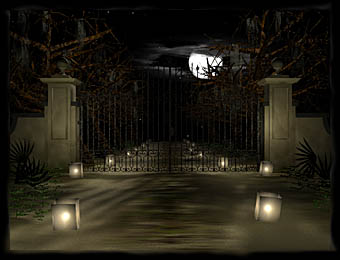Contemporary Views Of Death And Dying
Postmodernism opens with the
sense of irrevocable loss and incurable
fault. This wound is inflicted by the
overwhelming awareness of death—a death
that "begins" with the death of God and
"ends" with the death of ourselves. We
are in a time between times and a place
which is no place. Here our reflection
must "begin." In this liminal time and
space, deconstructive philosophy and
criticism offer rich, though still
largely untapped, resources for
religious reflection.
(Taylor, 6)
In his history of the Western
European attitude toward death, The Hour
of Our Death, Philippe Aries suggests
that there is a relationship between a
person's views of death and four
psychological themes:
- self-awareness
- defense against untamed nature
- belief in an afterlife and
- belief in the existence of evil.
(Aries, 602-3) In describing
contemporary views of death Aries says
that society has become ashamed of
death, afraid of death. And to hide that
fear it behaves as if death does not
exist. (Aries, 613) By hiding the dying
process in hospitals, by developing the
whole funeral industry, by denying the
grief of the bereaved, society has
"reduced death to the insignificance of
an ordinary event that is mentioned with
feigned indifference." (Aries, 614) Yet
this attitude toward death has not
eliminated either death or the fear of
death. Instead the image of the dying
hospital patient covered with tubes "is
becoming a popular image, more
terrifying than the transit or skeleton
of macabre rhetoric." (Aries, 614) In
response anthropologists, psychologists
and sociologists are attempting to
reconcile death with happiness. They are
attempting to make death "the discreet
but dignified exit of a peaceful person
from a helpful society that is not torn,
not even overly upset by the idea of a
biological transition without
significance, without pain or suffering,
and ultimately without fear." (Aries,
614) Elizabeth Kubler-Ross in her 1969
classic On Death and Dying may have been
the beginning of this movement. In her
work with dying patients she developed
what has become the contemporary
psychology of dying. In the introductory
sections of her book she proclaims that
"[d]eath is still a fearful, frightening
happening, and the fear of death is a
universal fear even if we think we have
mastered it on many levels. (Ross, 5)
She goes on to describe how modern death
has "become lonely and impersonal" due
to the rise of technology and the
increasing separation between medical
staff and their patients. (Ross, 8-9)
She attributes much of this alienation
to the anxiety felt by the medical staff
in the face of death, denial of death on
the part of both individuals and society
at large and the decrease in the number
people who believe in a life after
death, that is, immortality. (Ross,
14-15) Keeping in mind the postmodern
awareness of death, this paper will use
both Aries' and Ross' critique of
contemporary society to analyze the
responses to our survey questions and
other Pagan responses to death and dying
in an effort to find in this "liminal
time and space" alternative religious
reflections. Although Pagans live in the
culture described by Aries and Ross they
seem to have developed attitudes that
are different from those of the
surrounding culture, particularly in
reference to an afterlife. Many Pagans
have rejected the tradition Christian
view of eternal reward or damnation
(heaven or hell), instead they seemed
have developed a set of alternative
views of what happens after death. Of
the respondents to our survey thirteen
proclaimed a belief in some type of
reincarnation/recycling and five in some
other type of afterlife and only one
denied any type of continued existence.
But before we can explore these ideas in
more depth, we need to review one of the
stable myths of the Neo-Pagan
movement.
next page
return to index
